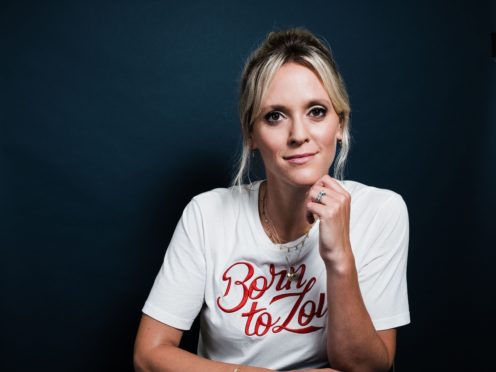Broadcaster Clemency Burton-Hill has told how she learnt to speak again a year after suffering a massive brain haemorrhage.
Burton-Hill was at work, aged 39, in New York when suddenly her speech started slurring and she collapsed.
The mother of two was rushed to hospital and came out of a coma after 17 days, unable to make a sound.
It is only in the last few weeks that she has been able to put sentences together.
“I couldn’t speak at all in sentences for a long time.
“At the beginning I had no speech, really no speech…. I could only make sounds,” she told BBC Radio 4’s Woman’s Hour, a year to the day since she collapsed.
This year has certainly been one to put the line ‘in sickness or in health’ in perspective. Words fail me (and not because severe brain injury will do that for you). Thank you, thank you, for everything @jmsroscoe 💙 pic.twitter.com/J7IYViQY7u
— Clemency Burton-Hill (@clemencybh) October 19, 2020
“As unbelievably frustrated as I might be now, it’s a miracle that I can even have a conversation.”
There are “no words,” she said of the feeling of being able to understand what people were saying but being unable to reply.
It is “beyond language because it’s so instinctive and then you can’t do it.”
She said: “I had come out of the coma for 17 days and at that point I just thought I was in a dream, or a nightmare.
“I just thought I was about to speak.
“In a way I’m still making sense of that, now as my reality… I might be processing that for my whole life because speech was my thing.”
It is not known whether Burton-Hill’s love of speech, as a broadcaster, best known for BBC Radio 3 Classical Fix, helped her learn to talk again.
Some “doctors have said, ‘You had a really amazing recovery with your speech’” and that it could be because of her line of work.
She said of learning to speak again: “You just start at the beginning. .. You don’t just get it back.
“But it in the first few months it was so unbelievably frustrating that one day, or even one hour, I could form a word and then in the next minute I couldn’t.
“It’s not a linear progression.”
Her youngest son, aged two, is learning to speak at the same time as his mother.
“There are parallels … but it’s completely different as well because in my head there are no problems with my speech.”
Now on @BBCRadio4: @Emmabarnett talks to @clemencybh in her first broadcast interview since she collapsed with a brain bleed and was in a 17-day coma last year. When she woke up, she couldn't move or speak https://t.co/fWBtsEPDOT pic.twitter.com/i9zuBGQJFF
— BBC Woman's Hour (@BBCWomansHour) January 20, 2021
She also told of the “most extraordinary experience” she had before waking up from her coma.
“I know that absolutely at that point I was given a choice” in which she was presented with, “this way is going to be very hard, are you sure you want to go this way?”, Burton-Hill told Woman’s Hour host Emma Barnett.
“Or this one is going to be very easy and it’s going to be fine.”
She added: “I don’t want to sound like some people choose not to live.”
The broadcaster can remember it “more clearly than anything I’ve ever had. … I know I sound crazy, like a lunatic, but it’s absolutely what it was.”
Thank you. I choose life ❤️ https://t.co/4UxouYIKOg pic.twitter.com/qor353Lcis
— Clemency Burton-Hill (@clemencybh) August 16, 2020
When she woke up in hospital, she thought, “I just had a crazy… nightmare, I can’t wait to tell my husband about that.”
But “then” she realised, “Oh my God, there’s a hospital, I can’t move anything, where am I? Who am I? What’s going on?
“Then there’s the point I’m going to speak and I can’t speak.
“I can’t even make a noise at that point.”
Burton-Hill, who is creative director of US classical radio station WQXR, said music has been the “most amazing and motivating factor in my recovery” but is also “sometimes just too painful and too raw”.
Her family “are the primary reason I keep going” but the brain injury means two young children are also “sources of tremendous anxiety”.
Burton-Hill told the programme her “brain can’t filter” different “threats”, with “everything at the same level”.
